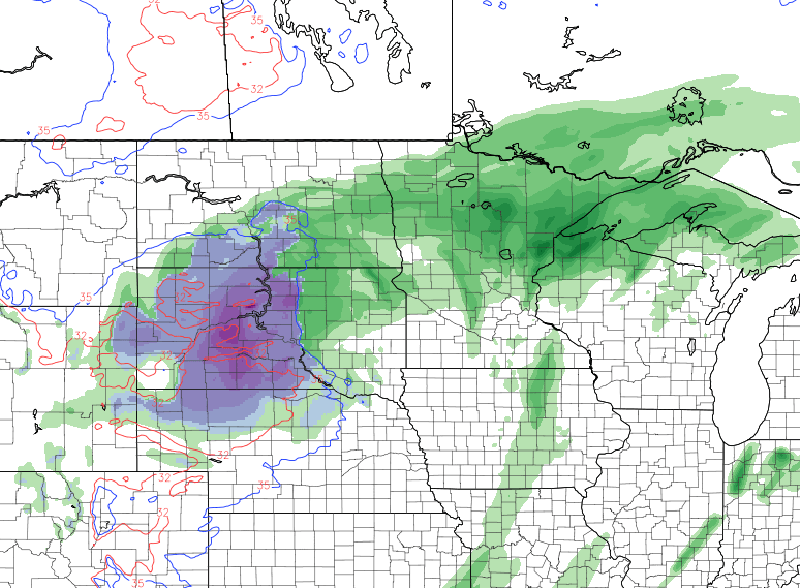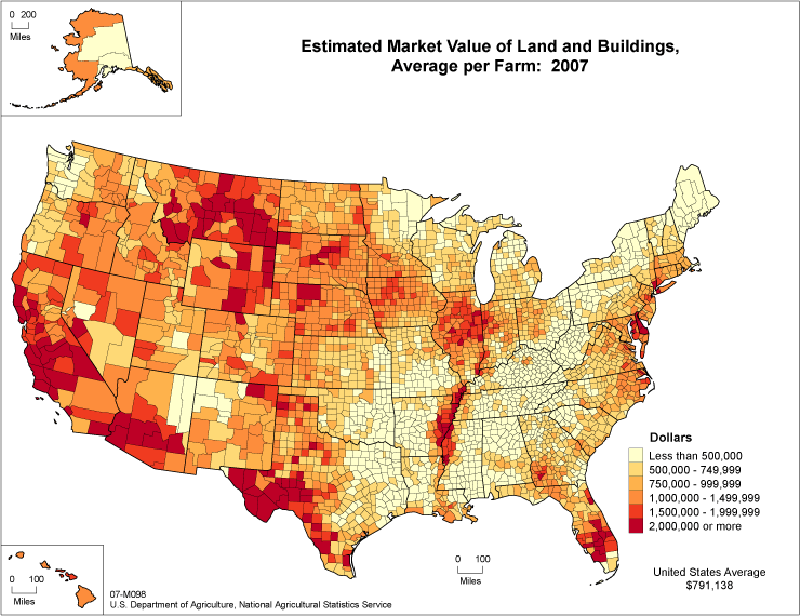[mf_h5 align=”left” transform=”uppercase”]1. No Farm Bill at Year’s End[/mf_h5] I know, hilarious! But what would it say if we could get together a map when congress — who has far more resources — can’t agree on a bill. Before leaving for winter recess, the house passed an extension to allow for more negotiation and a […]
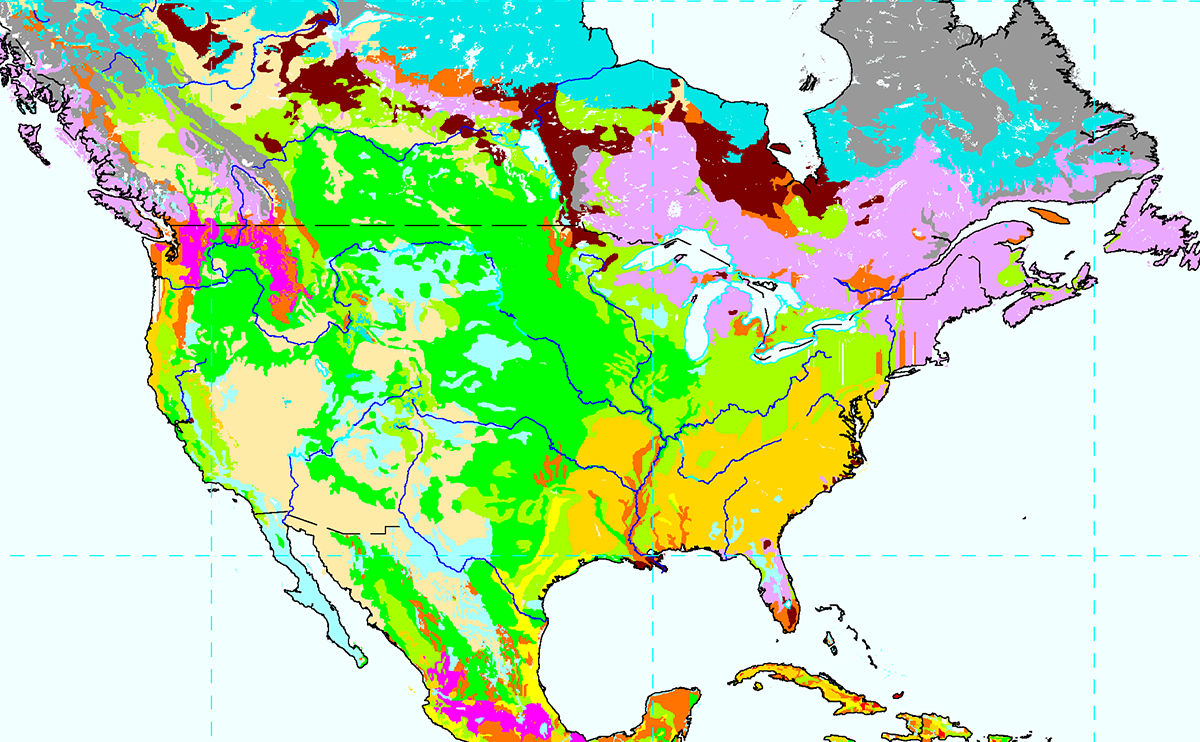
[mf_h5 align=”left” transform=”uppercase”]1. No Farm Bill at Year’s End[/mf_h5]
I know, hilarious! But what would it say if we could get together a map when congress — who has far more resources — can’t agree on a bill. Before leaving for winter recess, the house passed an extension to allow for more negotiation and a compromise appears close. Still, the farm bill squabbling of 2013 was a spectacle no one hopes to see repeated.
[mf_h5 align=”left” transform=”uppercase”]2. Fight for GMO Labeling Digs In[/mf_h5]

Map indicating which states have pending GMO labeling bills or upcoming ballot initiatives. Credit: Right to Know.
2013 saw battle lines drawn in the fight to label GMOs. Voters in Washington narrowly rejected a law requiring the mandatory labeling of all products with GMO ingredients, but GMO labeling laws passed the governor’s desk in Maine and Connecticut. Many more bills are waiting in state legislature around the country, so expect to hear lots of calls to “just label it” in 2014.
[mf_h5 align=”left” transform=”uppercase”]3. Blizzard Hits South Dakota Ranchers[/mf_h5]
“There are no words to describe the devastation and loss,” said Joan Wink of Wink Cattle Company after a record breaking blizzard that pummeled South Dakota in early October. As the snow thawed, officials counted about 14,000 frozen cattle piled against fences and highway embankments, not to mention 1,200 sheep, 300 horses and 40 bison. While the herd losses will echo into the future, The South Dakota Rancher Relief Fund will be accepting donations for affected ranchers until the end of the year.
[mf_h5 align=”left” transform=”uppercase”]4. The First of the Food Stamp Cuts[/mf_h5]
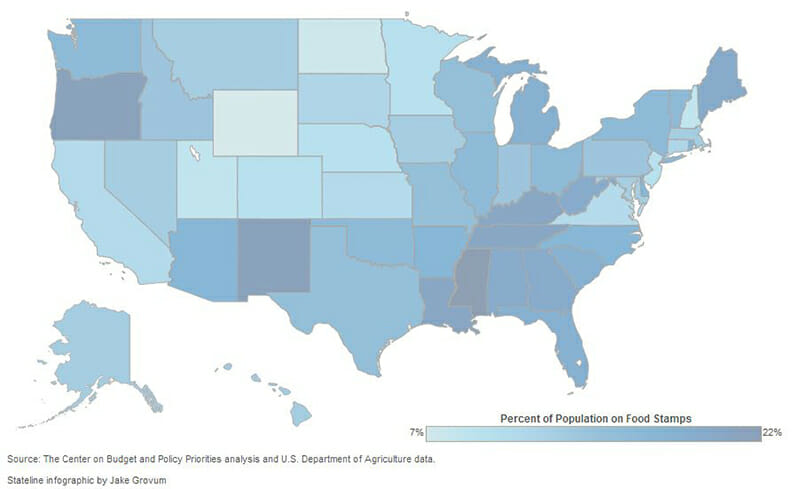
Bluer states show a higher reliance on food stamps. Screen shot from Stateline’s interactive food stamp map.
This year, congress refused to renew a 13.6 percent increase to the Supplemental Nutritional Assistance Program (SNAP) better known as food stamps. Cuts go even deeper in working versions of the farm bill. It’s a worry for states like Oregon, New Mexico and Mississippi which share a high reliance on the program.
[mf_h5 align=”left” transform=”uppercase”]5. Floods Follow 2012 Drought[/mf_h5]
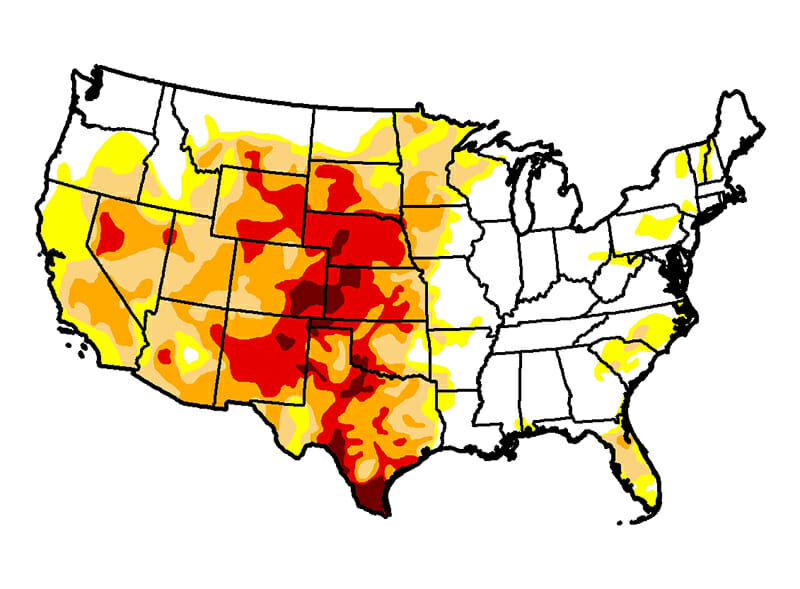
Drought map from April showing the driest regions in dark red. Torrential rains followed dry spells in some areas. Source: USDA Drought Monitor
One moment, Midwestern farmers are seeing less rain than their grandfathers did during the Dust Bowl. The next, they are praying for the rain to stop. The shocking shift from dry to wet was the basic story for the heartland. Even so, most farms were able to hold onto their crops to produce the largest harvest in U.S. history.
[mf_h5 align=”left” transform=”uppercase”]6. The Last of the Farming Boom Years?[/mf_h5]
Today, farms are much more valuable than this 2007 map from the last farm census indicates. The last six years have been an economic celebration of modern industrial agriculture with farm real estate values increasing 9.4 percent from 2012 to 2013. The next few years, however, could be the hangover. Higher interest rates, lower crop prices and a less vigorous government push for bio-fuels threaten an end to agriculture boom times. Still, current farm land values are at record highs.
[mf_h5 align=”left” transform=”uppercase”]7. A New Rural Population Drain[/mf_h5]

Map shows population change from April 2010 to July 2012, as a percentage of the 2010
census. Source: USDA, Economic Research Service using data from the U.S. Census Bureau.
Even as farms boast record profits, their surrounding rural communities are struggling to hang on to fewer and fewer manufacturing jobs says a report from the U.S.D.A. Between April 2010 and July 2012, almost 44,000 people left non-metro counties. While that might sound small, it marks a significant shift from population growth in rural America prior to the recession. Such a loss comes with many unwanted side effects, including a reduced demand for jobs, lower wages and higher per capita costs for providing social services to rural communities.
[mf_h5 align=”left” transform=”uppercase”]8. Farm Raised Fish Take Over [/mf_h5]
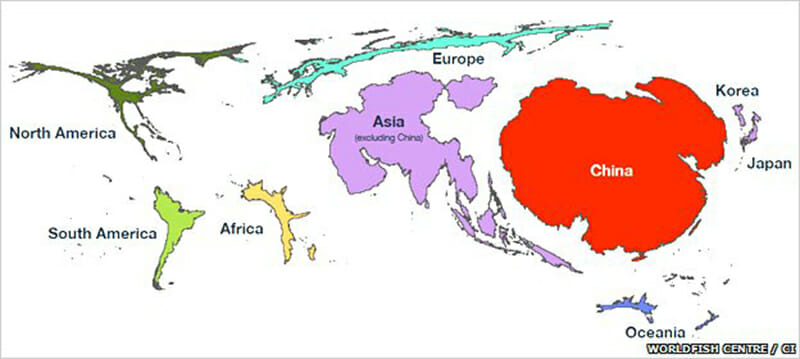
Each region’s distorted area show its portion of the world aquaculture operations. Source: Worldfish Centre
Sometime in the last year, the world quietly passed a seafood milestone according to the United Nations Food and Agriculture Organization. Now, most of the seafood we eat starts its life in fish farms or hatcheries rather than oceans, lakes, and rivers. The last 20 years has seen huge growth in aquaculture, especially in China. The country now accounts for 66 percent of the world’s farmed fish. It’s a trend many hope to see continue as fish farming can be one of the most efficient ways to make edible protein. Others, especially in the West, worry over the environmental impacts to wild ecosystems.
[mf_h5 align=”left” transform=”uppercase”]9. Farms Welcome Their Drone Overlords [/mf_h5]
Sure, a plane or a satellite could have made the photo collage above, but it was a drone that pieced together the image of a farm in Sabah, Malaysia. Drone technology has huge promise for farmers, who could use semi-autonomous aircraft to get a bird’s-eye view of their operation. High-resolution images could help farmers catch diseases before they spread and use water and pesticides with a high degree of precision. In fact, many expect farms to be the top market for drones once the F.A.A. regulates use of the technology.
[mf_h5 align=”left” transform=”uppercase”]10. Tough Times for Ethanol [/mf_h5]

Corn producers could face less demand from ethanol refineries with a lower EPA mandate. Source: USDA, National Agricultural Statistics Service
Demand for ethanol — the gasoline additive made from corn — just ain’t what it used to be. Corn prices fell to $4.22 a bushel following a proposal from the E.P.A. that would lower the mandated amount of ethanol in gasoline. It’s a steep decline for corn prices, which sold at $8 a bushel in the summer of 2012.
Top Image: U.S. soil taxonomy / USDA

